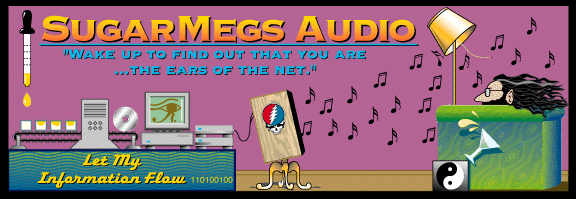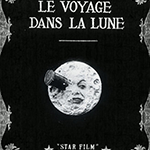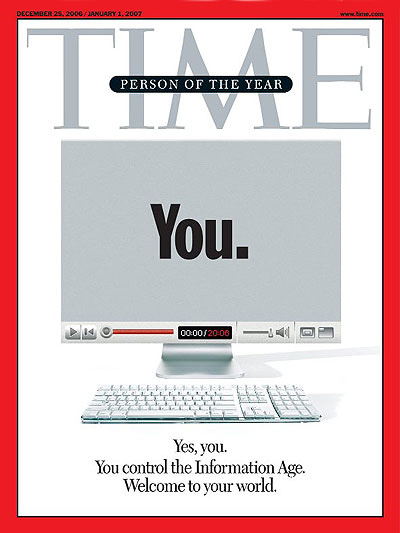 YouTube just turned fifteen years old. That means there was no YouTube before 2005. And how quickly we forget that YouTube was controversial in the beginning. YouTube was considered mostly pirate music videos, used as much as 80% of the Internet bandwidth traffic (which was in 2005 still mostly text and low-resolution images), and had no business model. YouTube was also Google’s first major acquisition. Google’s biggest single expense, for years after acquiring YouTube, was subsidizing all the bandwidth to watch all those uploaded videos. Now over a billion hours of video is watched every day on Youtube and the site routinely creates new Internet celebrities and millionaire influencers. But to get to YouTube, and communication apps like Zoom, other technologies needed to exist. Back in the day, those technologies include QuickCam, CU-SeeMe, RealPlayer, MP3, Winamp, and DivX/XviD.
YouTube just turned fifteen years old. That means there was no YouTube before 2005. And how quickly we forget that YouTube was controversial in the beginning. YouTube was considered mostly pirate music videos, used as much as 80% of the Internet bandwidth traffic (which was in 2005 still mostly text and low-resolution images), and had no business model. YouTube was also Google’s first major acquisition. Google’s biggest single expense, for years after acquiring YouTube, was subsidizing all the bandwidth to watch all those uploaded videos. Now over a billion hours of video is watched every day on Youtube and the site routinely creates new Internet celebrities and millionaire influencers. But to get to YouTube, and communication apps like Zoom, other technologies needed to exist. Back in the day, those technologies include QuickCam, CU-SeeMe, RealPlayer, MP3, Winamp, and DivX/XviD.
QuickCam
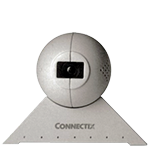 Videoconferencing couldn’t realistically exist without webcams. Much YouTube video is also recorded on webcams. Back in the day, in the mid 1990’s, we actually had “webcams” but we didn’t yet call them webcams and didn’t even know what to call them. I owned the first webcam when it was new, the Connectix QuickCam. The QuickCam was video-only (no audio) and transferred low-resolution grayscale images to the computer at up to 16 frames-per-second. QuickCam was originally for Mac, but a PC edition was released soon afterwards. Since USB didn’t exist, the PC edition of QuickCam connected to the computer through the printer port (LPT port) and got power through the computer’s keyboard port (AT or PS/2). It had an ingenius design, too. QuickCam was a plastic sphere that looked like an eyeball, with a cable that went out from the back, that sat on a rubber pyramid. Logitech, a major computer peripheral manufacturer, wisely bought the QuickCam name and technology from Connectix in the late ’90s before webcams got really popular, establishing Logitech as a leading webcam brand. Time Magazine named QuickCam one of the top 100 gadgets of all time.
Videoconferencing couldn’t realistically exist without webcams. Much YouTube video is also recorded on webcams. Back in the day, in the mid 1990’s, we actually had “webcams” but we didn’t yet call them webcams and didn’t even know what to call them. I owned the first webcam when it was new, the Connectix QuickCam. The QuickCam was video-only (no audio) and transferred low-resolution grayscale images to the computer at up to 16 frames-per-second. QuickCam was originally for Mac, but a PC edition was released soon afterwards. Since USB didn’t exist, the PC edition of QuickCam connected to the computer through the printer port (LPT port) and got power through the computer’s keyboard port (AT or PS/2). It had an ingenius design, too. QuickCam was a plastic sphere that looked like an eyeball, with a cable that went out from the back, that sat on a rubber pyramid. Logitech, a major computer peripheral manufacturer, wisely bought the QuickCam name and technology from Connectix in the late ’90s before webcams got really popular, establishing Logitech as a leading webcam brand. Time Magazine named QuickCam one of the top 100 gadgets of all time.
CU-SeeMe
 CU-SeeMe was Zoom decades before there was Zoom. Cu-SeeMe was on the install CD that came with the QuickCam, but I also recall it being on the setup disks I got in 1994 with my first dial-up Internet account . The CU-SeeMe app connected to a CU-SeeMe “reflector”, which was the name for the CU-SeeMe conference server software. In those days, what videoconferencing looked like was black and white, up to five frames per second, a list of participants, and just a group chatroom with no audio.
CU-SeeMe was Zoom decades before there was Zoom. Cu-SeeMe was on the install CD that came with the QuickCam, but I also recall it being on the setup disks I got in 1994 with my first dial-up Internet account . The CU-SeeMe app connected to a CU-SeeMe “reflector”, which was the name for the CU-SeeMe conference server software. In those days, what videoconferencing looked like was black and white, up to five frames per second, a list of participants, and just a group chatroom with no audio.
I remember having fun with CU-SeeMe. A lot of the people that did videoconferencing were on college campuses or in office buildings. The webcam was often just pointed at a fish tank, an ant farm, the office watercooler, or the street outside an apartment window. My best memories of using CU-SeeMe involve people I knew from high school coming over to try it out. I was the only person any of my classmates knew with a webcam. Girls I knew would come over and flash guys their chest on CU-SeeMe. The flip-side to that is the awkward experience of when girls would try out CU-SeeMe with me and, in a videoconference with a dozen other people, there’s inevitably at least one guy that decides to suddenly show their thing to everybody and gets thrown out of the CU-SeeMe videoconference.
The thought has crossed my mind a few times recently just how futuristic I was in the mid ’90s with having my own webcam and being able to use videoconferencing software like CU-SeeMe. Although they existed, webcams were not common until years later when laptops started having them built-in above the screen. The vast majority of webcams in the mid 1990’s were communal, in public places like libraries and computer labs, and they were treated as kind of like a novelty. Having your own private webcam and using videoconferencing software was quite high-end and sophisticated for a computer owner, especially a fifteen year old like me.
RealPlayer
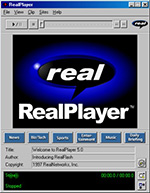 RealPlayer was a popular app to stream audio and video on the Internet that was first released in 1995. The technical term “streaming” likely didn’t exist before RealPlayer. Before RealPlayer, if you wanted to listen to an audio file then you were required to download the entire audio file. Same with video files. Since there wasn’t any good compression technology yet for audio or video, the ability to download entire songs, and certainly entire videos, was effectively impossible. The files were too big, took too long to download, and nobody had enough hard drive space. The way RealPlayer and other streaming apps work is they open a “web address” that, instead of downloading a webpage of text, downloads “packets” of a few seconds of audio/video data that hopefully download fast enough that there isn’t a break when you play the song/movie to wait for re-buffering.
RealPlayer was a popular app to stream audio and video on the Internet that was first released in 1995. The technical term “streaming” likely didn’t exist before RealPlayer. Before RealPlayer, if you wanted to listen to an audio file then you were required to download the entire audio file. Same with video files. Since there wasn’t any good compression technology yet for audio or video, the ability to download entire songs, and certainly entire videos, was effectively impossible. The files were too big, took too long to download, and nobody had enough hard drive space. The way RealPlayer and other streaming apps work is they open a “web address” that, instead of downloading a webpage of text, downloads “packets” of a few seconds of audio/video data that hopefully download fast enough that there isn’t a break when you play the song/movie to wait for re-buffering.
The way people, including me, “saved” streaming audio files back in the day was to connect an audio cable from the computer’s speaker output on the soundcard to the microphone input on a boombox, play the streaming RealAudio file on the computer, and record the audio onto a blank audio cassette tape in the boombox. The audio cassette could then be played later on the boombox or a portable Sony Walkman (the Apple iPod of its day). The two things I most recall streaming, and saving on audio cassette, were bootleg concerts by The Doors and Grateful Dead shows from SugarMegs Audio. The quality of audio was low with RealPlayer, but RealPlayer was the original predecessor to streaming audio apps, like Pandora and Spotify, and streaming video, like YouTube and Netflix.
MP3
 MP3, an audio compression format, is what finally made computers cool for everybody. Before that, even with CD-ROM and the web browser, most people thought of computers just for nerdy things like research, message boards, and chatrooms. Not everybody likes computers, but everybody has some preferred taste in music. MP3 made it possible to save entire individual songs using just 5 megabytes of space as an mp3 file instead of 50 megabytes or more for a wav file. In the late ’90s, 5 megabyte files were still considered big, but downloadable. Without MP3, there couldn’t be a YouTube, or other streaming video, because you can’t realistically have quality compressed video without first solving the problem of quality compressed audio.
MP3, an audio compression format, is what finally made computers cool for everybody. Before that, even with CD-ROM and the web browser, most people thought of computers just for nerdy things like research, message boards, and chatrooms. Not everybody likes computers, but everybody has some preferred taste in music. MP3 made it possible to save entire individual songs using just 5 megabytes of space as an mp3 file instead of 50 megabytes or more for a wav file. In the late ’90s, 5 megabyte files were still considered big, but downloadable. Without MP3, there couldn’t be a YouTube, or other streaming video, because you can’t realistically have quality compressed video without first solving the problem of quality compressed audio.
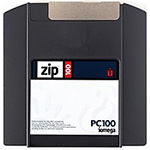 Although originally invented in 1993, the mp3 format didn’t catch on until summer of 1997 after the Internet had become mainstream. Digital Audio Extraction, also known as “cd ripping”, meant that programmers could write a computer program that enabled placing an audio CD into a CD-ROM drive, digitally extracting an entire song, and saving the entire song to a computer’s hard drive in MP3 format (“an mp3”). By the end of 1998, everybody was ripping their music CD’s and collecting mp3’s of their favorite songs. That led to the popularity of swapping mp3’s on Zip disks, which cost about $10 bucks each and held 100 megabytes. Eventually Iomega, the company that made the Zip disks and Zip drive required to use them, created 250 MB Zip disks. But by then, everybody had moved on to using CD burners and blank CD-R’s. In June 1999, people quit sharing mp3’s on any type of physical disk, with the start of the online peer-to-peer file-sharing revolution sparked by an mp3 sharing program called Napster.
Although originally invented in 1993, the mp3 format didn’t catch on until summer of 1997 after the Internet had become mainstream. Digital Audio Extraction, also known as “cd ripping”, meant that programmers could write a computer program that enabled placing an audio CD into a CD-ROM drive, digitally extracting an entire song, and saving the entire song to a computer’s hard drive in MP3 format (“an mp3”). By the end of 1998, everybody was ripping their music CD’s and collecting mp3’s of their favorite songs. That led to the popularity of swapping mp3’s on Zip disks, which cost about $10 bucks each and held 100 megabytes. Eventually Iomega, the company that made the Zip disks and Zip drive required to use them, created 250 MB Zip disks. But by then, everybody had moved on to using CD burners and blank CD-R’s. In June 1999, people quit sharing mp3’s on any type of physical disk, with the start of the online peer-to-peer file-sharing revolution sparked by an mp3 sharing program called Napster.
Winamp
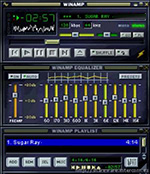 Winamp was by far the most popular mp3 player software for Windows. It had separate windows for the player itself, equalizer, and playlist. Winamp also had customizable “skins” that could be downloaded, which contributed to its popularity. Support for visualization plugins, like MilkDrop visualizations, was included with Winamp. Visualizations were usually displayed full-screen on a projector, hooked up to a computer, and popular at parties and raves. Originally released in April of 1997, Winamp had more than 25 million registered users just two years later. The programmer that wrote Winamp, Justin Frankel, sold Winamp to AOL in 1999 for millions of dollars and now writes high-end digital audio engineering software.
Winamp was by far the most popular mp3 player software for Windows. It had separate windows for the player itself, equalizer, and playlist. Winamp also had customizable “skins” that could be downloaded, which contributed to its popularity. Support for visualization plugins, like MilkDrop visualizations, was included with Winamp. Visualizations were usually displayed full-screen on a projector, hooked up to a computer, and popular at parties and raves. Originally released in April of 1997, Winamp had more than 25 million registered users just two years later. The programmer that wrote Winamp, Justin Frankel, sold Winamp to AOL in 1999 for millions of dollars and now writes high-end digital audio engineering software.
DivX / XviD
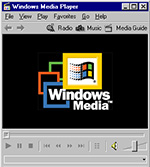 DVD was for video what CD was for audio: high quality and digital. DivX, and later the open-source version XviD, did for video what mp3 did for audio: made it possible to “rip” the entire performance from the disc and save it in a reasonable file size on a computer hard drive. DivX, like MP3, is a “codec” (compressor/decompressor), to compress a video file (create it) and decompress the video file (play it). The DivX codec was originally owned by a company that sold movies and other content online, DIVX.com. Somebody reverse-engineered the DivX codec and made the open-source “XviD” codec, which quickly became the standard codec for sharing movies online for ten years until MP4. Without DivX, and XviD, there couldn’t be a YouTube, or other streaming video, because you can’t have quality streaming video without quality compressed video.
DVD was for video what CD was for audio: high quality and digital. DivX, and later the open-source version XviD, did for video what mp3 did for audio: made it possible to “rip” the entire performance from the disc and save it in a reasonable file size on a computer hard drive. DivX, like MP3, is a “codec” (compressor/decompressor), to compress a video file (create it) and decompress the video file (play it). The DivX codec was originally owned by a company that sold movies and other content online, DIVX.com. Somebody reverse-engineered the DivX codec and made the open-source “XviD” codec, which quickly became the standard codec for sharing movies online for ten years until MP4. Without DivX, and XviD, there couldn’t be a YouTube, or other streaming video, because you can’t have quality streaming video without quality compressed video.
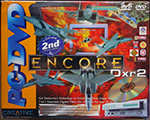 In the holiday season of 1998, DVD’s were starting to get very popular. People were really buying DVD players, including DVD players that installed in the computer to watch movies on a computer screen instead of a television screen. The first DVD player I ever owned was a kit that I bought in December 1998 and installed in my computer, the Creative Labs PC-DVD Encore Dxr2. The kit included a DVD-ROM drive and hardware accelerator card for high-quality DVD movie playback on the computer. I bought that DVD-ROM kit, and the first few DVD’s I ever owned, at Best Buy with my first credit card that I got when I was seventeen. As I recall, those DVD’s include the now-out-of-print This Is Spinal Tap Criterion Edition, Fear and Loathing in Las Vegas, and Boogie Nights.
In the holiday season of 1998, DVD’s were starting to get very popular. People were really buying DVD players, including DVD players that installed in the computer to watch movies on a computer screen instead of a television screen. The first DVD player I ever owned was a kit that I bought in December 1998 and installed in my computer, the Creative Labs PC-DVD Encore Dxr2. The kit included a DVD-ROM drive and hardware accelerator card for high-quality DVD movie playback on the computer. I bought that DVD-ROM kit, and the first few DVD’s I ever owned, at Best Buy with my first credit card that I got when I was seventeen. As I recall, those DVD’s include the now-out-of-print This Is Spinal Tap Criterion Edition, Fear and Loathing in Las Vegas, and Boogie Nights.

By Summer 1999, everybody was buying and renting DVD’s. Netflix was still new and their iconic red envelopes were everywhere. Since DVD movies are really just data discs with videos files saved on them, a DVD-ROM drive for your computer made it possible to save entire DVD movies on a hard drive. Between DVD, MP3 (audio compression), and DivX/XviD (video compression), it was now possible to “rip” DVD movies from the original disc and save the movie as a computer file. In 1999, people were also starting to record movies in the movie theater with a video camera, digitize/encode them on their computer, and share first-run movies online. Star Wars: The Phantom Menace and The Matrix were popular CAM rips in the summer of 1999.
Everyone Will Be World-Famous For 15 Minutes
 All the technologies I’ve mentioned paved the way for modern conveniences we take for granted like YouTube and Zoom. The webcam to take video (QuickCam), streaming technology (RealPlayer), audio compression for quality Internet audio (MP3), and video compression for quality Internet video (DivX/XviD). Fortunes were also made along the way. The YouTube guys (Chad Hurley, Steve Chen, Jawed Karim), Netflix founders (Reed Hastings, Marc Randolph), and even Mark Cuban with his Broadcast.com are just some of the entrepreneurs to create wealth as online video exploded in popularity. Communications technology, and our ability to reach each other, and understand each other, and make money from that innovation, will only get more exciting, and interesting, in the future.
All the technologies I’ve mentioned paved the way for modern conveniences we take for granted like YouTube and Zoom. The webcam to take video (QuickCam), streaming technology (RealPlayer), audio compression for quality Internet audio (MP3), and video compression for quality Internet video (DivX/XviD). Fortunes were also made along the way. The YouTube guys (Chad Hurley, Steve Chen, Jawed Karim), Netflix founders (Reed Hastings, Marc Randolph), and even Mark Cuban with his Broadcast.com are just some of the entrepreneurs to create wealth as online video exploded in popularity. Communications technology, and our ability to reach each other, and understand each other, and make money from that innovation, will only get more exciting, and interesting, in the future.
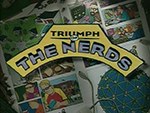 Triumph of the Nerds: The Personal Computer
Triumph of the Nerds: The Personal Computer
 Prizeo Brings Together Celebrities And Charities To Increase Awareness And Raise Money
Prizeo Brings Together Celebrities And Charities To Increase Awareness And Raise Money
 Venture Deals Explains Modern Venture Capital
Venture Deals Explains Modern Venture Capital
 Five Years of Y Combinator Universe
Five Years of Y Combinator Universe

